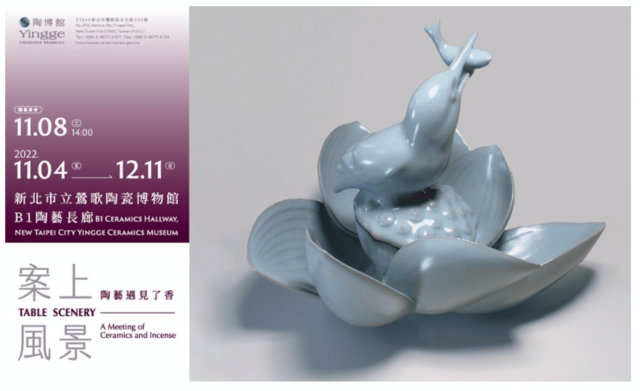-
Exhibition – Table Scenery—A Meeting of Ceramics and Incense
It was during the late Warring States period of ancient China when ceramics first met incense. The first ceramic incense burner appeared. The craftsmen experimented with different kinds of clay, blending in ash glaze, lead glaze, feldspar, or adding metals and other materials. A culture of incense utensils developed from the needs of daily-life and medicinal uses to include abstract aesthetics of appreciation. The ceramic incense utensil evolved over time and became a carrier of a profound cultural heritage.
Based on the idea of cultural fusion, the exhibition features traditional celadon in the both antique and new styles. Contemporary ceramicists like SU Bao-Zai and HUANG Shu-Man integrate the concept and function of scent in their works with great imagination. Their celadon ware is graceful and mellow and covered with thick glazes which are reflected resplendently in CHOU Jin-Tuan’s metal art. Ceramicist LIAO Li-Guang has always worked the wood-firing kiln, with ash glaze and feldspar glaze mixed in porcelain or clay. The design of his incense burner and incense container are both unique and elegant and reminiscent of the ancient style.
Ceramics incense utensils are still used in our time. Various burners, vases, and containers are assembled to form beautiful sceneries on the table. The wonderful colors are eye-catching, and the ancient concepts of beauty and shapes are re-imagined and introduced in contemporary life to provide us with new, timeless moments of leisure.
https://en.ceramics.ntpc.gov.tw/xmdoc/cont?xsmsid=0G300022253905324651&sid=0M292434562937710196


